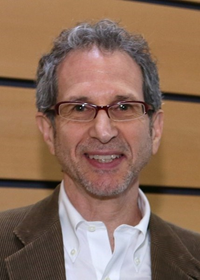Walter J. Chazin, PhD
More Information
The structure and function of macromolecular complexes that are important for human health
Dr. Chazin received a B.Sc. in chemistry from McGill University in 1975 and a Ph.D. in chemistry from Concordia University in Montreal in 1983. He was a postdoctoral fellow in the lab of Kurt Wüthrich at the E.T.H. in Switzerland (2002 Nobel laureate in Chemistry). After 13 years on faculty in the Department of Molecular Biology at the Scripps Research Institute, he moved to Vanderbilt in 1999 where he holds the Chancellor’s Chair in Medicine as Professor in the Departments of Biochemistry and Chemistry, and serves as Director of the Center for Structural Biology and the Molecular Biophysics Training Program. He has mentored ~100 graduate students and postdocs and ~30 undergraduate students in his 29 years as an independent investigator. He has published over 200 peer-reviewed papers and 50 book chapters and reviews, and serves on a number of advisory committees and editorial boards. His honors include American Cancer Society Junior Faculty and Faculty Research Awards, serving as a National Academy of Science International Travel Fellow and NAS Teaching Fellow, Regents Visiting Professor at the University of Naples in Italy, and appointments as a Fellow of the American Association for the Advancement of Science and Fellow of the Biophysical Society.
Research Information
I have a broad range of interests, using the concepts and approaches of structural biochemistry to address key questions in medicine and biology. Three key factors govern our research: (1) a deep commitment to pursuing critical questions in medicine and biology; (2) fascination with the mechanics of multi-protein machinery; (3) firm belief in the power of collaboration and multi-disciplinary team science.
One our research programs involves the study of DNA priming at the replication fork (the primosome). Part of this program focuses on describing the dynamic architecture as priming proceeds. The second part is a collaboration with Jackie Barton at Cal Tech to define the role of 4Fe-4S cluster redox driving charge transport through DNA as a means to regulate primer length counting and handoff. I am fascinated by efforts to demonstrate that the Fe-S cluster redox mechanism regulates priming, as this would be a fundamentally new mechanism of great significance to genome maintenance and propagation.
A second program is in the area of nucleotide excision repair (NER) of DNA damage induced by environmental toxins ranging from car exhaust fumes to cis-platin anticancer treatments. One part focuses on the core scaffold of the NER machinery, the coordinated action of NER factor XPA and the primary eukaryotic ssDNA binding protein RPA. The second part involves an effort using a fragment-based discovery approach to develop small molecule inhibitors of the two key protein recruitment domains of RPA, and of the central domain of XPA.
Two other programs derive from my long-standing research on EF-hand calcium binding proteins. Since this is an area where, after more than 25 years, the structural biochemistry and our expertise is highly advanced, these research project address very specific medical questions that originate in the clinic. The first program is directed to understanding how intracellular calcium signals modulate the gating functions of cardiac ion channels, and the mechanistic basis of mutations that cause cardiac arrhythmia syndromes. The second program focuses on the unique S100 EF-hand protein heterodimer called calprotectin (CP), which is a critical factor in the innate immune response to pathogenic organisms (e.g. such as Staph. aureus, Acenitobacter baumanii, C. difficile). This research addresses how our immune system uses CP as a core element to starve invading pathogens of essential trace metals by the mechanism known as ‘nutritional immunity’. CP also activates inflammation signaling via cell surface receptors, and we are investigating the mechanisms for how receptors are activated by CP. In addition, we have a small molecule discovery program to develop probe molecules to inhibit CP or the ligand-binding domain of the receptors. These are both beautifully integrated programs with our group working side-by-side with biologists, chemists and clinicians.
These programs/projects are heading into interesting areas over the next few years. I am excited about continuing to push the envelope of working on multi-protein complexes of full-length human proteins, using whatever combination of tools are needed to get answers. We seek to meet the challenge of correlating structure to biological activity, physiology and disease pathology, and then translating this information to patient therapies.

